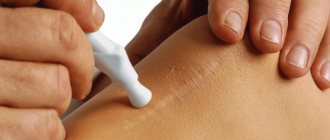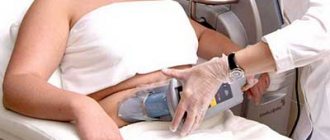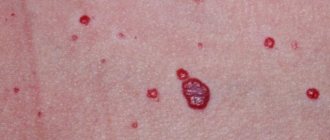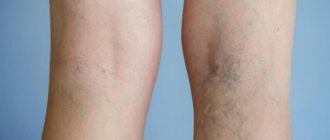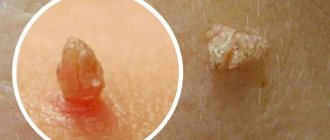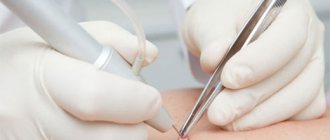What papillomas need to be removed and how to do it correctly
Have you been fighting PAPILLOMAS for many years without success?
Head of the Institute: “You will be amazed at how easy it is to get rid of papillomas by taking it every day.
Papillomatosis is a disease with which 40-50% of people are familiar, while 80% are infected with HPV. Neoplasms can appear on any part of the skin and cause significant discomfort to a person. Therefore, the question of how to get rid of papillomas on the body is one of the main ones in the treatment of the disease. Is it necessary to remove growths and how to do it correctly? Now tumors are removed surgically, with the help of medications and folk remedies - all these methods have advantages and disadvantages.
What growths need to be removed
The appearance of growths on the body is a consequence of HPV activity. It is the infection that leads to the growth of tumors, but not all infected people develop HPV at all. The immune system is able to control the virus and prevent the development of the disease.
Our readers successfully use Papilite to treat papillomas. Seeing how popular this product is, we decided to bring it to your attention. Read more here...
So is it necessary to remove papillomas on the body? The decision about surgery is made only by the doctor, and it depends on several factors. You can get rid of education if:
- Tests showed an oncogenic type of HPV. Some strains can cause cancer - such growths degenerate into a malignant tumor in 10-20 years. It is impossible to completely get rid of HPV, but dangerous consequences can be prevented by removing growths.
- The tumor is inflamed, damaged, and painful. Normally, the growths should not cause any discomfort - they are painless, and often people do not notice the manifestations of the disease. If they become inflamed, it is better to cut them off. Before removing a papilloma, you need to consult a doctor and undergo the necessary tests. Causeless inflammation of the tumor indicates the onset of malignancy (malignant process).
- Education is growing and changing rapidly. In this case, you must undergo an examination. Such changes are also considered evidence of the tumor degenerating into a malignant one.
- New growths are located on the skin so that they are easily injured. Doctors recommend removing thread-like growths on the neck, face and where they can rub against folds of clothing or accidentally break off. Injuries to growths are dangerous due to inflammation, blood poisoning and the development of an oncological process.
- Anogenital condylomas. HPV can appear as flat rashes or elongated growths, and the external and internal genital organs are affected. This manifestation of infection must be treated; HPV with such localization is often oncogenic.
Removal is not carried out if the tumor:
- Does not cause discomfort.
- Not growing.
- Located in places where it is difficult to injure.
- Caused by HPV with low oncogenic risk.
Operations to combat growths
If, nevertheless, it is decided to remove the tumor, it is best to begin treatment with a consultation with a dermatologist, gynecologist or urologist. The doctor will conduct the necessary examinations and choose the most appropriate method of resection of the growths.
In modern medical practice, minimally invasive methods of removing growths are used. They are painless, do not cause complications and minimize relapses, so after operations and a course of treatment you can forget about HPV forever.
The most popular methods for removing growths:
- Cryodestruction (cauterization with liquid nitrogen cooled to -180-190°C). The product is applied to the growth using a special preparation and pressed against the skin for 10-30 seconds. During the procedure, under the influence of low temperatures, the cells of the growth are destroyed, and the growth itself comes off the body in 1-3 weeks.
- Laser therapy. Unlike liquid nitrogen, which can kill cells not affected by the virus, laser exposure is calculated more accurately. Therefore, only affected tissues are destroyed, while healthy ones remain undamaged. This is a painless operation. Recovery takes 1-2 weeks.
- Wave operation. Removal of papillomas occurs under the influence of radio waves, while damage to healthy tissue is minimized (compared to a laser, the accuracy is 2 times higher). The operation lasts 5-15 minutes. Wound healing takes 2-5 days.
The listed methods are used in most cases. However, if there is a suspicion of cancer and the tissue needs to be sent for histology, laser and liquid nitrogen will not be suitable. The reasons for this are as follows: operations destroy tumor cells, and the tissues are not suitable for research. If additional diagnostics are necessary, the use of the radio wave method is permitted. But how to remove papillomas on the body if such an operation is unavailable for some reason? In this case, classical surgery is used - using a scalpel, the doctor can cut out growths larger than 2 cm and get rid of tumors that have grown deeper. The main disadvantages of the procedure:
- Painful, surgery requires anesthesia.
- Rehabilitation period – it will take 1-2 months for complete healing.
- Scars on the skin after surgery.
Creams and gels
You can cauterize the growths using special gels and liquids prescribed by your doctor. Effective products are sold in pharmacies, including:
- Cryopharma. A device for home cryodestruction helps kill cells affected by HPV in 1 session.
- Panavir. A drug that helps get rid of the manifestations of HPV, as it can inhibit the proliferation of infection and strengthen the immune system.
- Salicylic and oxolinic ointments. The tumor can be reduced in 5-7 days.
- Lapis pencil (active ingredient – silver nitrate). Suitable for treating manifestations of HPV, removes warts and corns.
- Feresol. Cauterization of papillomas is possible in 1 session. In addition, the solution has a bactericidal effect, therefore it is used for inflammation of the growth or infection.
- Aldara. Immunomodulatory agent. The cream must be applied to the tumor regularly for 3-4 weeks.
- Super clean. A product that can burn out tumors in one go. With the help of such liquids, growths measuring 0.2-0.6 cm are treated. It is prohibited to use it to remove formations on the genitals.
Cauterization of growths is not carried out in areas with thin skin (eyelids, genitals) and mucous membranes (mouth, larynx).
Folk remedies
People wonder how to get rid of papilloma at home. Indeed, since HPV is a common disease, there are quite a lot of ways to self-medicate. However, doctors warn about the following contraindications to self-medication:
- The growth changes color, shape, size, hurts and becomes inflamed. There is a possibility of a malignant process.
- The growths are located on the face (eyelids, chin), in the mouth. Such neoplasms cannot be removed at home, as this can lead to a cosmetic defect, and if localized on the eyelids, to loss of vision.
- Anogenital condylomas. Before any treatment, you should definitely consult a gynecologist or urologist. This will help determine the type of HPV and find the right way to fight the disease.
If there are no contraindications, you can use folk remedies. For a long time, skin growths were gotten rid of using the following methods:
- Celandine juice. A popular remedy, applied 1 time directly to the growth itself. Before removing papillomas in this way, it is better to seal the skin around the formation with an adhesive plaster. This will protect you from burns.
- Garlic. 2-3 cloves are ground and mixed with cream. The resulting product is applied once a day for 1 month.
- Castor oil. The product is applied at night for 3-4 weeks. The treated area of skin is covered with a bactericidal adhesive plaster.
- Dandelion juice, buttercup. They are used in the same way as celandine juice, but have a milder effect. Juices are fast methods, since papillomas on the body can be removed in 1-2 times.
- Tea tree oil. Essential oils work well against growths if you apply them regularly (2-3 times a day) and continue the course until they disappear completely (3-6 weeks).
- Egg white. The protein is spread on the growth itself and left until dry. After this, without washing off the previous layer, the next one is applied on top of it. The neoplasm dies and disappears within 1 week.
This is interesting: How to get rid of papillomas on the labia
Is it painful to remove papillomas using folk remedies? Indeed, unlike modern operations, such methods sometimes require patience from a person. Various cauterizing agents (iodine, celandine, etc.) can be especially traumatic. If they are used incorrectly, the wound takes a long time to heal, and then a scar remains because a lot of healthy tissue was burned out.
People are also often concerned about whether it is dangerous to remove growths at home. If the virus appears for the first time, it is better to undergo a full examination by a doctor. If this is a relapse of the disease and you are absolutely sure that it is HPV with a low oncogenic risk, the neoplasm itself does not cause discomfort and is no more than 3-5 mm in size, you can remove it at home. With large formations, it is better to consult a doctor, since it is simply impossible to properly remove such a growth at home.
How to avoid relapses
HPV relapses are a common development of a disease that was not treated correctly. How to get rid of growths forever and is it possible? On the one hand, HPV infection remains for life, so a person is not immune from recurrence of the disease. On the other hand, proper therapy helps suppress the activity of the infection and reduce the risk of relapse to 5-10%.
Since it is impossible to get rid of the virus forever, doctors recommend combining treatment of growths with immunotherapy. Supporting the immune system will protect the body from the manifestations of HPV. It is also important to eliminate the causes that provoke the development of the disease - bad habits, poor nutrition, concomitant chronic diseases.
Proper removal of tumors also helps to avoid relapses. When we get rid of them using folk remedies, there is a risk of incomplete elimination. This happens especially often with flat warts - they grow deep into the skin, and even cauterization does not reach the lower layers. As a result, the virus is reactivated in the same area. This is why you cannot remove large growths yourself.
Insufficient treatment and improper removal of growths are the main causes of relapses. In addition, the disease may return in the following cases:
- Weakening of the immune system due to protracted illnesses.
- Chronic infections.
- Spring-autumn period. Moreover, the activity of HPV does not depend on what time of year it appears.
- Development of immunodeficiencies and autoimmune diseases.
- Pregnancy.
- Age over 50 years.
- Excessive exposure to ultraviolet radiation.
Skin care after treatment
After you have gotten rid of the growths, it is important to properly care for the damaged area of skin. This will help avoid the formation of scars and age spots.
- Do not visit baths, saunas, avoid elevated temperatures.
- Avoid sunlight. The skin should be covered with a band-aid, and after healing, cover the damaged area with clothing for at least another month. The question arises: is it possible to remove papillomas in the summer? Doctors recommend doing this in extreme cases.
- During operations on the face and eyelids, do not use cosmetics, including creams, for 1-2 weeks after the wound has healed.
- After cryodestruction or the use of cauterizing agents, it is forbidden to scratch the dying areas of the skin, because they will leave scars. Therefore, in cosmetology, the radio wave method is used to remove tumors on the face.
Self-destruction of tumors
The papilloma may unintentionally fall off if it had a thin stalk. And some people, without fear of pain, independently tear off the interfering growth. This is strictly prohibited. You should not remove papillomas for the following reasons:
- Papilloma may not be a growth, but a benign neoplasm, which due to mechanical damage will develop into a malignant tumor.
- At the site of the tear, a wound remains, which can become infected. The skin swells, turns red, and pus forms.
- The build-up does not come off completely. Small particles of neoplasm remain on the skin, infected with a virus that causes cells to divide with redoubled force. As a result, two new ones grow in place of the severed papilloma.
- After tearing off, the affected skin takes a long time to heal. As a result, the wound turns into an ugly scar.
If the papilloma has disappeared and there is no redness, swelling or pain at the site of its attachment, it is still necessary to consult a doctor for advice.
Is it possible for a person to remove moles on his face?
Is it possible to remove moles on the face? The doctor will answer this question. For some, a nevus is an additional, attention-grabbing decoration, but for others, it is a serious cosmetic defect. Is it better to remove these formations or leave them? What methods are there to remove moles? How does laser removal of moles from the face occur? Every woman who has a similar defect on her face asks herself this question.
Is it possible to remove moles on the face?
Moles have another official name - nevus. This is a benign tumor that forms in the upper and middle layers of the skin. The cells that form the skin are able to accumulate and accumulate pigment, which gives the mole a brown color. Thus, another formation appears on the skin.
A child is born without a single nevus; they appear on the skin much later. It’s worth mentioning one point right away: in addition to nevi, there may be pigment spots on the face. They appear immediately at birth.
Moreover, nevi appear on the face much more often than on other parts of the body. According to doctors, this is due to the fact that the face is the most unprotected area of the body. There are several prerequisites that influence the formation of these growths.
Hereditary factor. Nevi can be inherited. This conclusion was made based on DNA analysis. It was found that they already contained information about the location of formations. Therefore, both the father and the son can have a nevus in the same place. Experts advise not to remove such a nevus.
Ultraviolet radiation. This radiation, hitting the skin, stimulates the production of melanin. Then a mechanism is launched that leads to the appearance of formations. Therefore, you should not bring your skin color to black when tanning. This tanning can cause nevi to appear, and it can lead to skin cancer.
The hormonal factor is especially active during puberty. During this period, the pituitary gland influences the production of melanin. Something similar happens to pregnant women. They may also develop birthmarks during this period. But the most interesting thing is that simultaneously with the formation process, nevi can disappear on their own, including on the face.
A birthmark may form at the site of a bee or wasp sting.
All moles can be classified into two groups.
- The first group is vascular. Formed at the site of capillary proliferation. This type is most often found in women, including on the face. These formations can be removed. Most often this is done using a laser.
- Pigmented ones are formed by skin cells and can be removed in several ways.
The main danger of birthmarks is their degeneration. Before deciding to remove moles from your face, you should visit a dermatologist. This visit is necessary in order to determine whether this birthmark is harmless or a malignant tumor.
In some cases, the doctor may advise not to remove the nevus, but to monitor its further development. Information on how to remove a mole can be obtained from various sources, including the Internet, but you should not follow all the methods described there. And you certainly cannot remove these formations yourself at home, especially those located on the face.
Is it possible to remove a nevus on the face yourself?
There are many traditional medicine recipes that allow you to remove moles at home, but there is no guarantee that after such exposure it will not degenerate. Is it worth the risk of disfiguring your own face by following untested advice and trying to remove nevi at home?
Most often you can find flat birthmarks on the face. They are light brown in color. Such formations cannot be removed.
Convex formations are small in size and form in the deep layers of the skin. Very often hair grows from them.
Hemangiomas look like red nodules and are very similar to warts; it is very difficult to distinguish one from the other, and only a specialist can do this.
This is interesting: Human papillomavirus herpes
Blue birthmarks are slightly less common. They are quite large and rise well above the surface of the skin. Such formation can be easily removed using a laser.
Pigment spots should not be touched at all. Since these spots also increase with human growth, and according to statistics, half of them are capable of degenerating into cancer under the influence of unfavorable factors. Therefore, they cannot be removed or masked in any way.
It is possible to remove the formation or not, whether it is necessary to stand in line for the procedure at a medical institution, only a dermatologist, and not a cosmetologist, can decide. Cosmetologists do not have proper qualifications.
How are moles on the face removed? Birthmarks must be removed if there is a danger of their degeneration. Not many people would risk removing a nevus on their own. You cannot remove birthmarks yourself at home.
Our readers successfully use Papilite to treat papillomas. Seeing how popular this product is, we decided to bring it to your attention. Read more here...
Methods for removing nevus on the face
Methods for removing moles from the face vary according to the type of impact. Only a doctor can determine how the growth will be removed.
In order to carefully remove a mole on the face, it is best to use a laser. Removing moles on the face with a laser is the least traumatic procedure. After exposure to the laser, there are no scars left, which is very important when removing a mole on the face. With this effect, the likelihood of microbes entering the wound is completely eliminated.
Methods for removing formations:
- The laser, due to its high temperature, destroys microbes itself. After laser exposure, regeneration processes in the layers of the skin are significantly activated. The formation is cut off with a laser to the very root, and a crust forms at the site of the mole, which, without forming a scar, disappears over time on its own. The main thing is to try not to injure the skin in this area again. The question of how much it costs to remove a mole is difficult to answer. The total cost of the procedure depends on the number of growths that need to be removed and the removal method chosen. Removing a mole on the face with a laser is a fairly expensive procedure.
- The radio wave method of removing moles from the face is based on the use of high frequency radio waves. The waves penetrate into the deep layers of the skin and burn out the formation.
- Electrocoagulation. Electric current is used for removal.
- Cryodestruction is another method of removal, but using liquid nitrogen.
All these methods are more painful and not as safe as laser removal. No matter how the formation is removed, you need to remember that the face has particularly delicate skin, and any impact can cause enormous harm instead of benefit, because the body’s individual reaction to a traumatic factor cannot be predicted.
The question of whether it is possible to remove a mole on the face cannot be answered unequivocally. When making a decision, you should think not about the aesthetic side of the issue, but about the safety of the procedure. It is impossible to ensure a good level of sterility at home, so it is better to carry out the removal procedure in a hospital or beauty salon.
Removal of formations in a precancerous state is mandatory. The remaining lesions should be removed after examination for the presence of cancer cells and with the permission of a dermatologist, who can give permission after consultation with an oncologist.
The patient herself should not make the decision to remove the birthmark. The method of removal in each specific situation should be selected depending on the location of the formation and its type.
Disease prognosis
After any modern procedures to remove tumors, papillomas disappear completely. However, the removal of papillomas is only the elimination of the symptoms of the disease; the cause itself (low immunity and, as a consequence, a high concentration of the virus) still remains. Therefore, after removing the growths, patients are prescribed antiviral drugs (Acyclovir, Anaferon) and immunostimulants (Isoprinosine, Panavir).
It is better to remove papillomas when it is summer or winter, since in autumn and spring the weather is often damp, which will interfere with wound healing.
How to get rid of papilloma is now clear, but how to maintain this effect? It is important to say that it is completely impossible to get rid of the human papillomavirus. Even after completing the full course of treatment, the risk of relapse of the pathology remains forever. To avoid relapse of the disease, it is recommended to strengthen the body: harden, play sports, spend more time relaxing and in the fresh air, lead a healthy lifestyle, eat a balanced diet and take vitamin and mineral complexes.
If tumors reappear, you should consult a specialist. He knows why papillomas appeared and how the patient can get rid of them forever. He will also be able to tell you whether warts need to be removed in a particular case.
What are papillomas and why are they dangerous for women?
Papillomas are a papillomavirus infectious disease. The appearance of papillomas on the body means that the woman’s body has a metabolic disorder. The reason for the appearance of various papillomas must be found within yourself. These could be gynecological diseases, gastritis, or perhaps kidney disease. It is necessary to wage a comprehensive fight against papillomas: not only externally, but also internally. To fight viruses, it is necessary to strengthen the human immune system, just as viruses appear more often and more often when it is lowered. We are simply susceptible to infectious disease when our immunity is weakened.
Is it possible to remove papillomas at home, what does modern medicine say about this?
Of course, doctors do not recommend doing such independent removal. After all, it is possible to permanently remove such a skin tumor only by removing it from the roots. And once again we would like to remind you that there are papillomas that should never be touched, and if you are determined to remove them yourself, be sure to find out the nature of this papilloma.
Of course, in folk medicine, there have long been proven medicines in the fight against papillomas. For example, these neoplasms can be burned off at home using celandine extracts or juice prepared from it. You only need a few drops of this folk remedy, which will help get rid of papillomas at home within a few days. It is enough to cauterize minor and small skin formations only once, larger ones - two or three times.
You must first steam the papilloma or wart in hot water to open the pores. After this, using a special applicator, literally apply a couple of drops to the papilloma. Beforehand (to avoid burning healthy skin), you can lubricate the area around the papilloma with some baby cream. After applying a few drops, it will begin to darken and you will feel a burning sensation. Consequently, the process has begun and you need to be patient a little. There may even be dark discharge or blood clots. You can remove them with a piece of cotton wool or a cotton swab. The size of the papilloma may visually increase. It's possible. It is more important to remove the roots themselves and cauterize the papilloma entirely. The procedure can be repeated after a couple of days (this will depend on the size of the papilloma). The growth will gradually become dry and disappear in a couple of days. And the skin will quickly acquire a healthy, smooth appearance. If a dark spot remains after cauterization, it will disappear in about one to two weeks. It should be noted that it will not be possible to get rid of papillomas in places where the skin is roughest and hardest in one go.
But doctors warn about the toxicity of celandine. It must be used on its own very carefully so as not to cause damage to other areas of the skin. To prevent new formations, doctors advise eating a large amount of foods containing vitamin C: lemons, sauerkraut, black currants, cranberries.
The most painful way to remove
There are several effective ways to remove growths: chemotherapy;
- removal of papilloma with liquid nitrogen;
- laser removal;
- radio wave destruction.
- Cryodestruction (removal with liquid nitrogen) is the most painful way to remove growths caused by HPV.
During the procedure, the patient feels the touch of a metal object in a very cold state, but the level of pain varies from person to person (depending on their pain threshold).
Some patients cannot withstand the procedure (they have to use painkillers), while others, on the contrary, experience no pain at all.
At the beginning of the cryodestruction process, the patient feels a slight tingling sensation, which develops into coldness and burning.
Severe pain can occur when removing large growths, but removing small warts with liquid nitrogen is almost painless.
How to treat papillomas at home?
Treatment of papillomas at home with folk remedies - infusions and decoctions, homemade ointments - has been successfully practiced for decades.
For example, the popular name for celandine, warthog, is due precisely to the fact that the juice of this plant was used to remove warts and papillomas.
To remove papillomas in men and women at home, plants such as rowan, walnut, aloe and Kalanchoe, garlic, as well as many other “non-herbal” remedies are also used. We will tell you more about various home treatment methods.
This is interesting: Papilloma has turned black: what is the reason and what to do
In what cases can and cannot be removed papillomas?
Papillomas are benign neoplasms on the human body caused by the activity of the human papillomavirus (HPV).
According to statistics, this virus occurs in 80% of the world's population, equally in both women and men, but it does not manifest itself on the body in everyone. HPV is activated when a person’s immunity weakens, for example, after illness, prolonged treatment with antibiotics, after severe psycho-emotional stress, etc.
It is currently impossible to completely neutralize this virus, but by strengthening the human immune system, HPV activity can be reduced.
You can also remove the external manifestation of HPV on the human body - papillomas.
This can be done with the help of the achievements of modern medicine, through classical surgery or minimally invasive techniques, as well as pharmaceutical products, or traditional methods.
In any case, no matter which treatment method you choose, first of all you should consult with a specialist - a dermatologist - and make sure that the unsightly growth on the body is a papilloma, and not, for example, a psoriatic plaque or skin cancer.
After all, if the formation is malignant, then independent treatment can only aggravate the situation and contribute to the rapid growth of cancer cells.
In addition, there are often cases when papillomas on the body (this is especially typical for children) self-destruct - they gradually decrease in size and eventually disappear completely.
In this case, there is no need to treat them in any way. However, this must still be confirmed by a doctor.
If the tumors on the body are small, and after visiting a doctor, you still decide to undergo treatment at home, then you should, firstly, carry out all manipulations under sterile conditions (treat both hands and “instruments” with an alcohol solution) so as not to prevent the wound from becoming infected, and secondly, act comprehensively.
The latter means that you should not only treat neoplasms with one or another remedy, but also strengthen the body’s defenses (drink a complex of vitamins, for example), harden yourself, play sports and lead a healthy lifestyle.
We also note that you cannot carry out an operation yourself - to excise a papilloma on yourself or on the body of another person.
It is only allowed to bandage the stem of the tumor with a thread (if we are talking about a convex papilloma), tightening the thread over time.
It is also undesirable to self-medicate if the tumor is localized on the mucous membranes or on the face.
What are the contraindications to the procedure?
Contraindications to laser removal of papillomas:
- colds;
- herpetic infections;
- low-quality neoplasms;
- diabetes;
- During pregnancy and breastfeeding;
- fresh tan
Before treating skin after laser removal of papillomas, you must consult a specialist. When choosing products for postoperative wound treatment, it is better to give preference to non-allergenic drugs. Potassium permanganate is often prescribed for this, which can provoke a local allergic reaction.
To prevent adverse consequences after the procedure, you must first study reviews of laser papillomas removal. It is equally important to know how experienced the doctor you are going to see for surgery is. The quality of the procedure performed depends on his professionalism.
Violations of laser destruction technologies can lead to severe injury to the epidermis. This, in turn, can lead to the formation of scars and scars.
The reasons for excision of skin papillomatous growths can be divided into two large groups:
- Cosmetic. They are caused by the peculiarities of the location of papillomas on the face, neck, and open parts of the body.
- Medical. Associated with changes in size, color, trauma, and spread of papillomatous growths.
Conditions limiting use are:
- pregnancy and lactation;
- decompensation of chronic diseases: diabetes mellitus, cardiac activity;
- allergic manifestations to the use of local anesthetics.
| Service: | Cost, rub: |
| Laser removal of papillomas, hemangiomas, milium, angiomas, molluscum contagiosum on the body (1 piece up to 3 mm) | 350 |
| Laser removal of papillomas, hemangiomas, milium, angioma, molluscum contagiosum on the body (from 4 to 8 mm) | 620 |
| View all services or call us and we will advise you | For free |
FAQ
Laser vaporization is a safe, fast and effective way to treat skin manifestations of HPV. The most common questions patients ask before the procedure are:
- Is it painful to remove papillomatous tumors? The operation is performed under local infiltration anesthesia, which ensures complete absence of pain.
- Is it possible to remove papillomas with a laser in the summer? Exposure to ultraviolet radiation in the area of a postoperative scar provokes the appearance of hyper- or depigmented areas, which worsens the cosmetic result. If a situation arises where removal is necessary in the summer, it is recommended to use sunscreen for at least a month after the procedure.
- What are the consequences of laser papilloma removal? There are no scar changes left on the skin or they are minimal. However, after laser vaporization, areas with changes in pigmentation and keloid formation may form. Such consequences are rare. The reason for their occurrence is non-compliance with the doctor’s recommendations during the rehabilitation period.
After operation
A crust forms in the wound area, under which healing occurs. On the 7-10th day after the manipulation, the scab falls off on its own. After the intervention, follow simple recommendations:
- Treat the wound at least twice (morning and evening) until a thick crust forms. For this purpose, a 5% solution of potassium permanganate, brilliant green, or any antiseptic is used.
- You cannot visit the swimming pool, sauna, solarium, or go out into the open sun for a month.
- It is strictly forbidden to pick off the resulting crust to avoid the formation of rough scars.
- After the dry scab falls off, you can use hydrocortisone ointment or other topical remedies as recommended by your doctor.
Professional removal of papillomas with a laser at the Laser Medicine Clinic is a modern, safe and effective way to fight for youth and beauty of the skin. Call! The doctor consults for free.
Treatment with pharmaceutical methods
The simplest and most effective, as well as the fastest way to get rid of papillomas is to regularly treat the tumors with one or another antiviral ointment.
Thus, interferon-based drugs have proven themselves well and receive good reviews: “Viferon”, “Kipferon”, “Interal-P”, “Gerpferon”, “Genferon”.
These drugs strengthen the body's defenses, activate the production of antibodies and stimulate epithelial cells to produce their own interferon.
Depending on the size of the tumors, treatment with such agents lasts from 2 to 4 weeks.
Also effective are ointments for removing papillomas, such as “Dermavit”, “Ferezol”, “Verrukatsid”, “Superchistotel”.
The main active ingredient of this series of drugs is celandine extract. Ointments and gels based on celandine seem to cauterize the tumors and, unlike products with interferon, treating papillomas with ointments with celandine takes no more than 2-3 days.
However, you should work with them extremely carefully, as you can burn healthy tissue.
Another option for solving the problem of papillomas at home is the use of cryopharms (see photo) - that is, freezing pharmaceuticals (“CryoPharma”).
Having purchased such a product at the pharmacy, it should be applied to the affected area of the skin (the procedure is absolutely painless) and wait the prescribed time.
Under the influence of low temperatures, necrosis of epithelial cells will occur, so the neoplasm will disappear.
The advantage of such home “cryodestruction” is that after removing the papillomas, no traces remain on the skin.
It is also possible to remove small raised growths using adhesive tape for papillomas. It is enough to purchase such a tape at the pharmacy and follow the instructions.
As a rule, after sticking the tape on the papilloma, you need to wait 3-4 hours, and then, moisten the strip with water, forcefully tear it off the skin. The papilloma should come off along with the strip.
